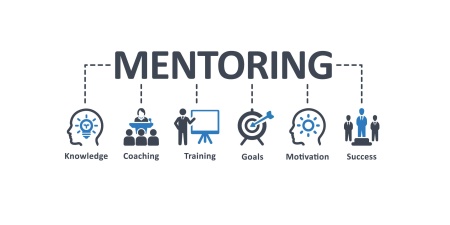By Jay Spielvogel, Venator Sales Group, LLC
“I am a face-to-face type of salesperson”
“I don’t do well on the phone vs. physically meeting with people”
“I like to press the flesh and sell in-person”
Sound familiar?
These are common responses to management when salespeople are asked why they fail to leverage the phone for selling. As a response to virtual selling during the pandemic, webinars and articles abound, presenting tips and tricks for even the most seasoned salespeople on how to sell in the virtual world. “Be energetic; ask how they are impacted by COVID; use video when engaging and clean up before getting on the call.” This is all great advice, but are we ignoring a deeper issue?
Selling over the phone requires a comfort level with asking questions, listening actively, and, most of all, engaging in honest dialogue. Compare this to the face-to-face meeting, where the salesperson is a guest walking around the operational facility, asking technical questions, gathering information, and presenting. There is a safety-net provided by the walk-in visit that disappears when a salesperson is forced to fully engage on the phone without all the props and distractions.
In spite of an incredible amount of investment in sales training, most salespeople are still defaulting to their old habits, where they schedule a site visit to collect technical needs, bring their subject matter experts in to educate on solutions, and present proposals. This common sales approach lacks any qualification steps, including drilling down into the business drivers, inquiring about, and getting access to, key stakeholders, clarifying budget allocation process and remediating roadblocks.
Has the pandemic caused a new issue or simply exposed an existing one?
The answer to this question becomes obvious when reviewing opportunities that were carried into 2020 from the prior year. If you dig deep into the deals that were “stalled by COVID,” the stark reality is that most were in distress for months prior to the onset of the pandemic. Before the shutdown, the “business tide” was so high that there was no time or need to dig deep past the dollar value and close dates for each opportunity. Now that business has slowed down, sales managers across the globe are beginning to look at the opportunity pipeline with a more observant eye for what is real and what is wishful thinking. It is only now that we are seeing these deep-rooted pre-pandemic issues, including a total lack of alignment with the real decision makers, next steps, budget, and timeline.
Since the phone is a much less forgiving medium, and less comfortable than face-to-face selling, we need to retrain even the most seasoned relationship sellers on how to engage at a deeper level. Most salespeople see themselves as engaging when they are simply educating, presenting, and proposing. However, there must be a deeper connection with the prospect. Juxtapose this with the way VP or C-level team members approach selling when asked to join a salesperson on a call. For the most part, they are not detail-oriented and are not to be relied upon for the proposal and pricing follow-up. What they are good at is engaging with prospects, especially when asked to make a phone call on behalf of the salesperson.
So, what is their superpower? They are amazing at sharing stories, drawing the prospect into deep dialogue, and asking engaging “power” questions. The stories they tell are much different than the solution presentations most salespeople offer. They share past stories related to the issues, concerns and unrealized visions other prospect companies have experienced. They demonstrate credibility through experience rather than knowledge. Call it confidence, posturing or simply an amazing ability to articulate past situations and draw prospects into the story.
How do we teach our salespeople to do this?
1) Demonstrate credibility through experience rather than knowledge (otherwise known as effective storytelling).
The mistake most companies make is they focus all the training on providing their salespeople with benefit-based presentations. The salespeople become experts at presenting the products, services, and value proposition. This approach is meant to drive interest in receiving additional solution information and pricing, but lacks any triggers for engaging the prospect to open. Therefore, we hear so many salespeople in meeting debriefs, say, “They loved our presentation and they are interested in getting more info and pricing.” This approach works well for in-person meetings, because it leaves the reps with the feeling that they had a “great” meeting leading to an opportunity to send a proposal. Unfortunately, this approach falls short for phone-based selling.
To help salespeople transition to using the phone more often and qualifying better, we need to provide them with a library of stories that focus on the operational and business impact of the issues and concerns other clients were experiencing prior to engaging with our company. Much like a commercial on TV, the sales rep needs to be able to tell stories that evoke emotional engagement. The key here is to help our salespeople get comfortable with using stories as a bridge, engaging the prospect to share their similar experiences. This brings us to the second tool we need to provide the sales team.
2) Ask Power Questions
When placed in a selling situation, a high-level executive does not waste time with basic technical questions. They leverage the sales opportunity to ask a handful of powerful questions that are meant to create a bi-directional flow of dialogue. Where most salespeople focus on asking technical needs-based questions that help in crafting a solution presentation or proposal, the VP of Sales or CEO will focus the questions on business impact and internal politics. These questions require a certain level of sales posturing and confidence. Some examples of these questions include:
- Is there pressure on your department to fix this?
- Is this having any effect on your team’s operational or financial goals?
- Is the issue affecting other project timelines or goals?
- How is this impacting the overall company, operationally and financially?
- Is there a corporate objective or vision that is being hurt by this issue?
- How will this influence overall annual goals? Long term goals?
- What is the scale of this issue if it is not resolved?
- Is there external pressure from shareholders or customers to fix?
Most training programs focus on role playing the basic clarification questions as well as presentation skills. It is critical that salespeople are coached in using effective storytelling and “power” questions, especially if they are going to expand their use of the phone as a selling tool.









